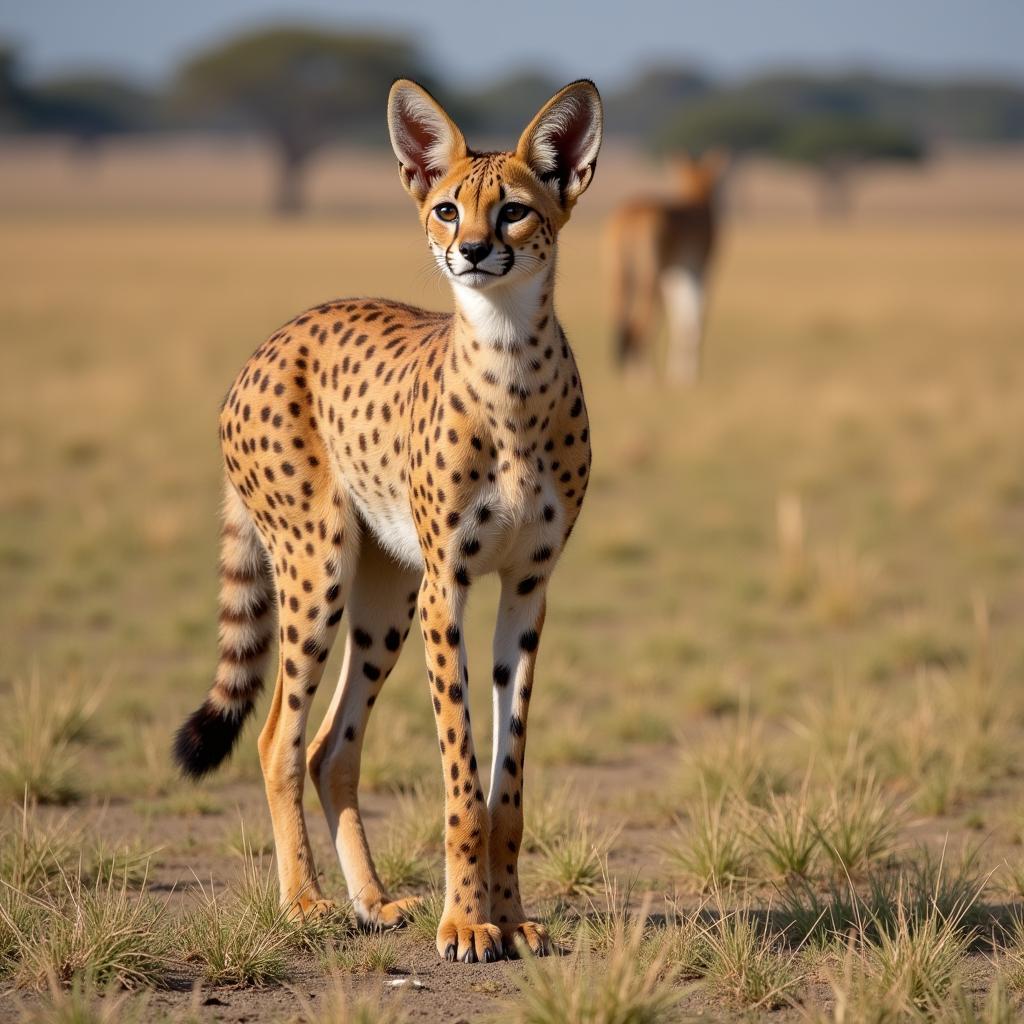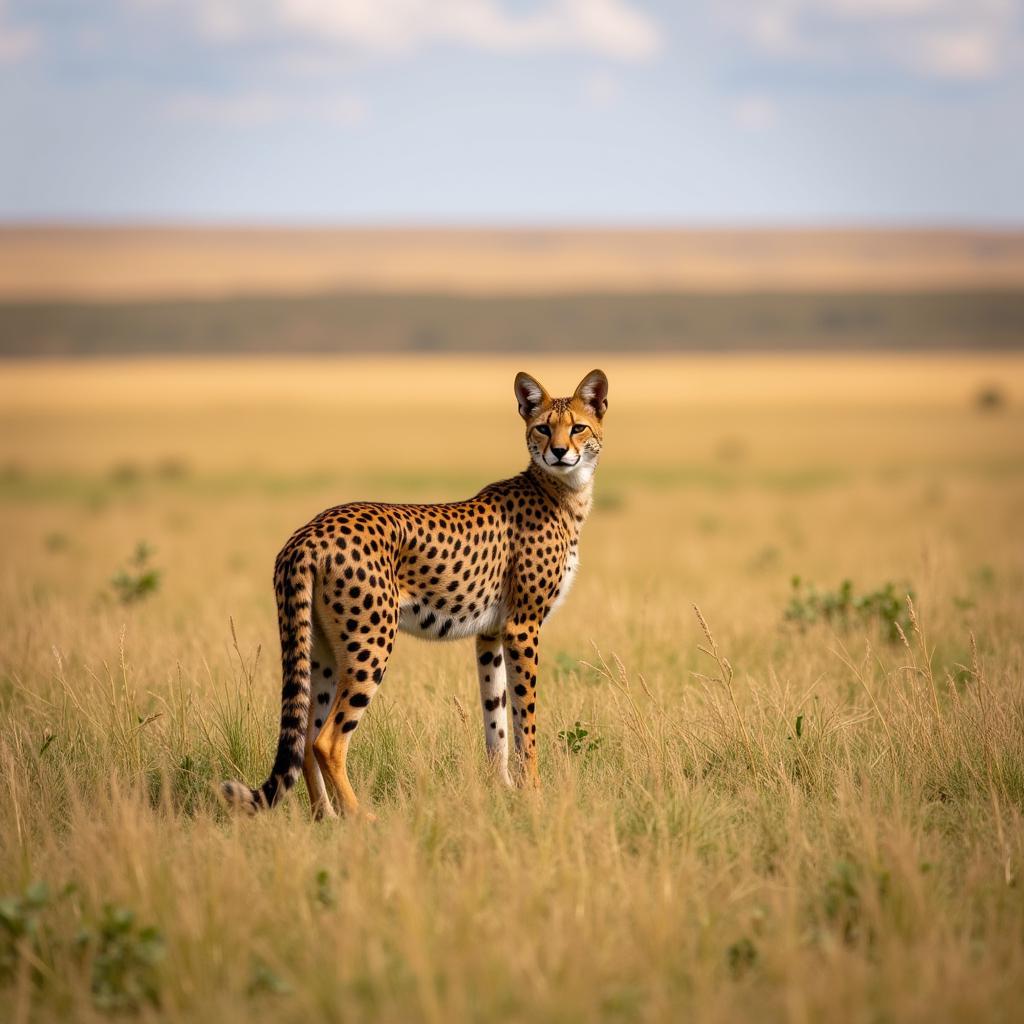Unveiling the African Serval: A Majestic Feline
The African Serval, a medium-sized wild cat native to sub-Saharan Africa, is a captivating creature known for its striking coat, long legs, and large ears. With its unique appearance and intriguing behavior, the serval has captured the attention of wildlife enthusiasts worldwide. Learn more about this fascinating feline and its place in the African ecosystem.
The African serval boasts a distinctive spotted coat, reminiscent of a cheetah but with a more slender build. Its exceptionally long legs allow it to navigate tall grasses with ease, while its large ears give it an exceptional hearing advantage. This remarkable combination of physical characteristics allows the serval to excel as a hunter in its native habitat. It’s a truly mesmerizing sight to behold the serval in action, showcasing the power and grace of African wildlife. As a key member of the African carnivorous animals list, the serval plays a vital role in maintaining the balance of the ecosystem.
The Serval’s Physical Characteristics: A Study in Adaptation
The serval’s physical attributes are perfectly suited for its lifestyle. Its long legs, proportionally the longest of any cat, enable it to leap high into the air, snatching birds mid-flight. Its large, oval-shaped ears are not just for show; they are highly sensitive and allow the serval to pinpoint the location of prey hidden in dense vegetation. This extraordinary hearing, combined with its keen eyesight, makes it a formidable predator.
 African Serval Physical Characteristics
African Serval Physical Characteristics
Habitat and Diet: Navigating the African Savanna
Servals are found in a variety of habitats across sub-Saharan Africa, primarily in savannas and grasslands with access to water. They are adaptable creatures, also found in woodlands, moorlands, and even mountainous regions up to 3,800 meters in elevation. Their diet consists primarily of rodents, birds, reptiles, and insects. They are opportunistic hunters, taking advantage of whatever prey is available. Servals often hunt at night, utilizing their exceptional hearing and eyesight to their advantage.
The Serval’s Hunting Prowess: A Master of Stealth and Precision
The serval is a highly skilled hunter, employing a combination of stealth and precision to capture its prey. It can leap up to 3 meters vertically, snatching birds from the air or pouncing on rodents hidden in the grass. Its long legs allow it to pursue prey through tall grass, while its sensitive ears help it locate prey hidden underground. The african cat with big ears is a master of its domain, a true testament to the power of natural selection.
Conservation Status and Threats: Protecting the African Serval
While not currently endangered, the African serval faces threats from habitat loss due to human encroachment and agricultural expansion. They are also sometimes hunted for their fur and are occasionally killed in retaliation for preying on livestock. Conservation efforts are crucial to ensure the continued survival of this magnificent feline. For those intrigued by the allure of wild cats, it’s essential to understand the responsibilities and complexities involved. Read more about the implications of owning such a unique animal on this informative platform about the african cat pet serval.
Are African Servals Social Animals?
African servals are generally solitary animals, except during mating season and when raising young.
What is the lifespan of an African Serval?
In the wild, African servals typically live for 10-12 years.
Dr. Anika Moti, a renowned wildlife biologist specializing in African felines, states, “The serval is a testament to the power of adaptation. Its unique physical characteristics perfectly equip it for life on the African savanna.”
The Future of the African Serval: Preserving a Legacy
The African serval holds a significant place in the African ecosystem. Protecting its habitat and mitigating threats is essential to ensure the continued survival of this magnificent creature for generations to come. Join us on an african cats adventure to delve deeper into the fascinating world of these creatures and explore the vital role they play in maintaining the balance of the African wilderness.
In conclusion, the African serval is a truly remarkable animal, a symbol of the wild beauty and diversity of the African continent. Understanding and appreciating its role in the ecosystem is crucial to its continued survival. The majestic African serval reminds us of the importance of conservation and the need to protect these incredible creatures. You might also be interested in learning about other fascinating african f animals, which offers a broader perspective on the continent’s diverse fauna.
 African Serval in Natural Habitat
African Serval in Natural Habitat
FAQ
- What does an African Serval eat? (Rodents, birds, reptiles, insects)
- Where do African Servals live? (Sub-Saharan Africa, savannas, grasslands)
- How big do African Servals get? (Medium-sized, up to 2 feet tall at the shoulder)
- Are African Servals endangered? (Not currently endangered, but facing threats)
- What is the lifespan of an African serval? (10-12 years in the wild)
- Can you have an African Serval as a pet? (Regulations vary; often discouraged due to specialized needs)
- How do African Servals hunt? (Stealth, pouncing, high jumps)
For any support, please contact us via Phone: +255768904061, Email: kaka.mag@gmail.com or visit us at: Mbarali DC Mawindi, Kangaga, Tanzania. We have a 24/7 customer service team.


